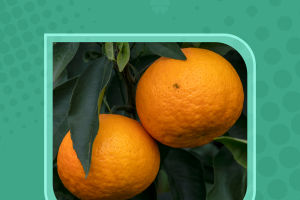Kumquats, or cumquats in Australian English, are a group of small fruit-bearing trees in the flowering plant family Rutaceae. Their taxonomy is disputed. They were previously classified as forming the now-historical genus Fortunella or placed within Citrus, sensu lato. Different classifications have alternatively assigned them to anywhere from a single species, C. japonica, to numerous species representing each cultivar.
Kumquats are slow-growing evergreen citrus trees or shrubs. Gardeners often plant kumquats not just for their fruit, but also because they make an attractive addition to their landscape or a lovely potted décor to their home. Classified as a Citrus japonica, they were once classified as a part of the Fortunella genus. The Kumquat fruit has a sweet, edible skin with a slightly sour flesh inside (although some kumquat varieties skin cannot be eaten unless processed).
The kumquat tree leaves are simple, long, and alternate, finely toothed from the apex to the middle, dark-green, glossy above, lighter beneath.
A kumquat isn’t much bigger than a grape, yet this bite-sized fruit fills your mouth with a big burst of sweet-tart citrus flavor.
In Chinese, kumquat means “golden orange.”
They were originally grown in China. Now they’re also grown in several other countries, including warmer areas of the United States, such as Florida and California.
In contrast with other citrus fruits, the peel of the kumquat is sweet and edible, while the juicy flesh is tart.
Kumquats are especially notable for their rich supply of vitamin C and fiber. In fact, you get more fiber in a serving of them than most other fresh fruits.
Kumquats also supply smaller amounts of several B vitamins, vitamin E, iron, magnesium, potassium, copper and zinc.
The edible seeds and the peel of kumquats provide a small amount of omega-3 fats.
As with other fresh fruits, kumquats are very hydrating. About 80% of their weight is from water.
The high water and fiber content of kumquats makes them a filling food, yet they’re relatively low in calories. This makes them a great snack when you’re watching your weight.
Kumquats are best eaten whole — unpeeled. Their sweet flavor actually comes from the peel, while their juice is tart.
The only caveat is that if you’re allergic to the peel of common citrus fruits, you may need to pass up kumquats.
If the tart juice turns you off, you can squeeze it out before eating the fruit. Just cut or bite off one end of the fruit and squeeze.
However, many people suggest popping the whole fruit into your mouth and biting in, which mixes the sweet and tart flavors.
It also may help to gently roll the fruit between your fingers before eating. This helps release the essential oils in the peel and mixes the flavors of the sweet peel and tart flesh.
In addition, chew kumquats well. The longer you chew them, the sweeter the flavor.
If you want to soften the peel before eating the fruits, you can plunge them into boiling water for about 20 seconds and then rinse them under cold water. This isn’t necessary though.
Types of Kumquats:
There are various kumquats; they are distinguished as botanical species rather than as cultivars. There are four main species – most utilized for food – the Marumi, Meiwa, Nagami, and the ornamental Centennial Variegated Kumquat. Aside from these types, there are many more unique species of kumquat hybrids.
Marumi – The Marumui tree size can reach up to 9 ft (2.75m) and is slightly similar to the Nagami but slightly thorny and has smaller leaves.
Meiwa – Sometimes called round kumquat or sweet kumquat because of its taste and fruit shape. The tree is generally a dwarf which makes it a good candidate as a potted tree. The mature Meiwa tree size is about 4 – 8 ft.
Nagami – The Nagami Kumquat is the most common species of kumquat. It is also called the oval kumquat because of its oblong-shaped fruits. Also, generally, a dwarf kumquat tree reaches around 6 to 10 ft when planted on the ground.
Centennial Variegated Kumquat – The Centennial Variegated Kumquat is larger and sweeter than most kumquats. Some believe it’s a cross between a Nagami Kumquat and a mandarin.


